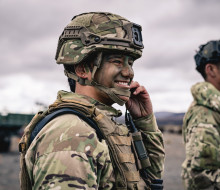
Keeping skills alive in transfer to Reserve Force
05 July 2024
Unfortunately you are viewing this website on an outdated browser which does not support the necessary features for us to provide an adequate experience. Please switch to a modern browser such as latest version of Google Chrome, Mozilla Firefox, Apple Safari or Microsoft Edge.
Ngā mihi nui
Two Royal New Zealand Air Force personnel, one uniformed one civilian, became the first in the service to receive a Mataora (male facial tattoo). At RNZAF Base Ohakea’s Tūrangawaewae, master carver Matua Hemi Te Peeti created the works of art.
Flight Sergeant Nare Whittaker (Ngāpuhi and Ngāti Kuri) along with Deveraux Short-Henare (Ngāti Kahungunu) received their Mataora in the New Year. It was a spiritual and emotional occasion for them both.
"When I look at myself in the mirror I see what had probably been there for ever, but it’s now on the outside. It hurt, but through the pain came the beauty, the taonga that I have the honour of wearing every day."
The journey to receiving the Mataora began for F/S Whittaker at the end of 2021 after he had completed his rumaki reo, te reo full immersion training.
“That same year I’d got my first tā moko on my arm and I thought I was ready for a Mataora. The journey was interesting because I kept putting up roadblocks as to why I should get it. I had a lot of people tell me I needed to ask my iwi for permission to get one, or from my parents, or that I needed to have reached a certain level of my Māoritanga (Māori culture).
“But then I spoke with someone who said I didn’t need any permissions, they said I’d know when I was ready.”
When I look at myself in the mirror I see what had probably been there for ever, but it’s now on the outside.
Flight Sergeant Nare Whittaker
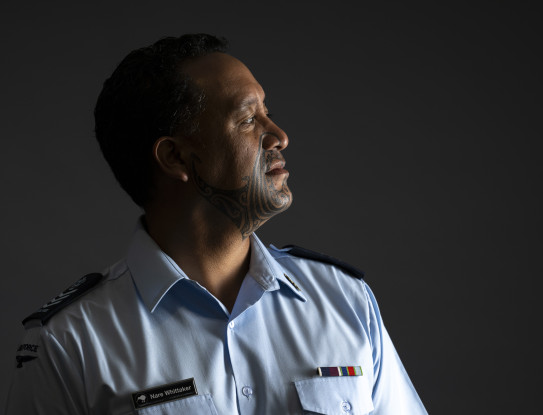
Matua Hemi created the design based on his knowledge of F/S Whittaker’s Te Tai Tokerauiwi.
“I’ve known Matua Hemi for so long and he has been a master carver for years and can whakapapa to anywhere,” F/S Whittaker said.
“The design represents where I’m from, Te Tai Tokerau - the Far North - and my whānau. Those who had gone before me and those who will come after. I feel blessed to adorn this taonga from one of our RNZAF kaumātua.”
After receiving the Mataora, F/S Whittaker said he felt pride in the work.
Everyone in the organisation knows the journey I’ve been on and knows me through that, but now for everyone who doesn’t know me, can see I’m Māori – this is me.
He let people in his command chain know he was going to be receiving the facial tattoo and discovered there would be some restrictions for personnel with them to deploy to some countries.
“It’s important for people in the military to know that before they choose to get the procedure done,” he said.
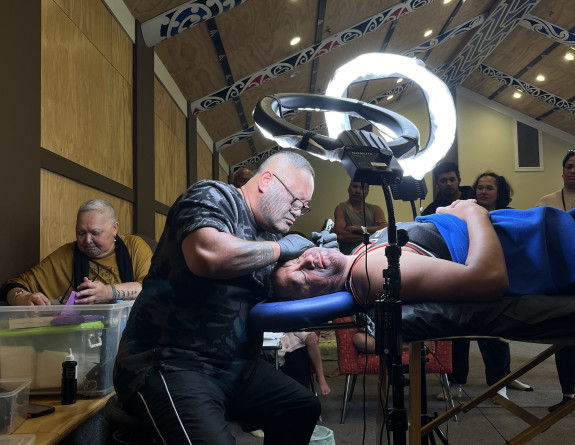
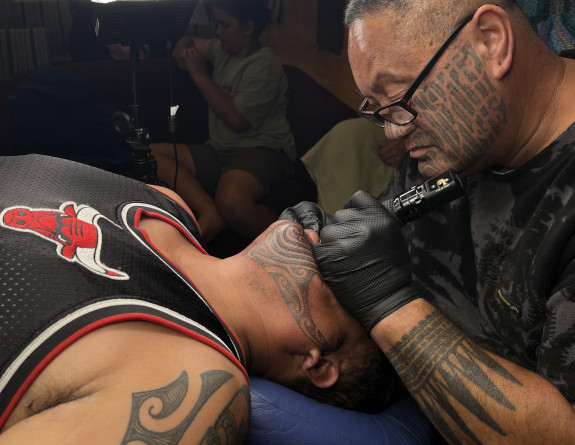
Mr Short-Henare, from Flaxmere in Hastings, said his Mataora design was sourced from the area he grew up in.
“I feel quite content. The week leading into it and out of it has made me feel really settled within myself.”
Organising his 30th birthday at Base Ohakea’s Tūrangawaewae about a year ago prompted Mr Short-Henare to start thinking about receiving a Mataora. It made sense to do it at the same location as it was close for his whānau to get to.
“I was looking around my whānau and we didn’t have any Mataora. My whānau has just begun their reo and Māoridom journey but I’ve been on my reo journey since high school. It was a also a great opportunity to educate people on the base – to make it a teaching point while getting it done.”
He spoke with his whānau, in particular his grandparents, about receiving a Mataora and found they were all supportive, if not concerned about the pain he would be going through, as it was his first moko.
While Mataora is understood in New Zealand’s culture, Mr Short-Henare realised reactions might not be the same if he chose to leave the Defence Force and work overseas.
“There could be some friction in some countries where moko is not looked on in a positive light – whether that be a lack of understanding or negative past influences. But I thought this is who I am and it’s something that I’m ready for.”
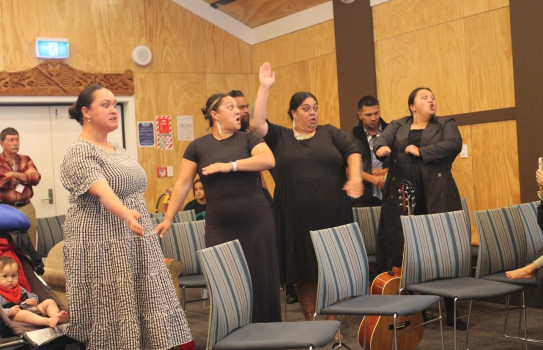
It took Matua Hemi an hour and a half to draw the design and just under three hours to do the tattoo.
“And it did hurt,” Mr Short-Henare said.
“Matua Hemi brings all his knowledge including whakapapa as well. That’s one of the reasons why I went with Hemi, because he had that knowledge behind him.”
It was unsettling seeing his face for the first time, but the Mataora has now “settled quite nicely”, he said.
I’ve had a lot of feedback from my whānau saying that it was always there and they didn’t recognise me without it.
Deveraux Short-Henare
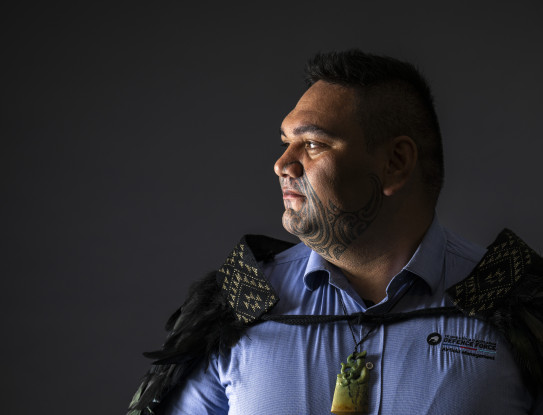
During the process, Mr Short-Henare tried not to focus on the pain and ended up in meditative-type state.
“I was trying to find the space to ease the pain, but still be present. It is a spiritual moment.
“It enhanced my connection with my ancestors, the older ones who passed. But I had a younger brother who passed in 2020, he was four-years-old and he lost his battle with cancer. I tried to bring him into the fold as well, to give me the strength to get through it.
“I drew strength knowing that those who had passed were there with me.”
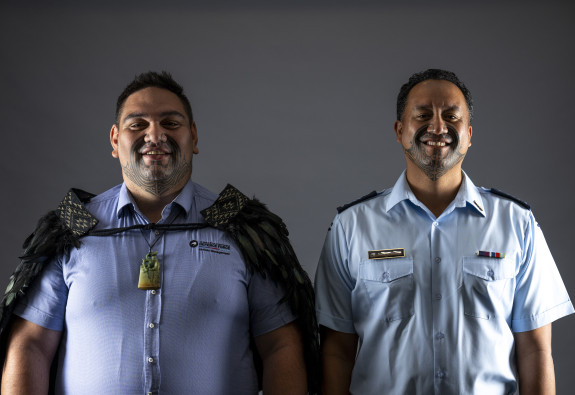
|
Nare’s pepeha |
Dev’s pepeha |
|
Te taha o tōku Pāpā Ko Whakarongorua te maunga Ko Utakura te awa Ko Ngātokimatawhaorua te waka Ko Ngāpuhi te iwi Ko Te Honihoni te hapū Ko Puketawa te marae Ko Rahiri te tangata
Te taha o tōku Māmā Ko Tohoraha te maunga Ko Whitirea te moana Ko Waihopo te awa Ko Hauhora te wahapū Ko Kurahaupō te waka Ko Ngāti Kurī te iwi Ko Ngāti Kaha te hapū Ko Waiora te marae |
Ko Maumaukai rāua ko Te Whānga-nui-ā tara ngā maunga Ko Nūhaka rāua ko Waingongoro ngā awa Ko Tāne-nui-ā-rangi rāua ko Waimarama ngā marae Ko Rakaipaaka, Ngāti Kurukuru rātou ko Ngāti Whakaiti ngā Hapū Ko Ngāti Kahungunu te iwi Ko Takitimu te waka
Ko wai au? Ko Deveraux Short-Henare tōku ingoa |